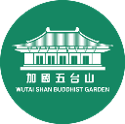Audio 0021-2 English
We are now arriving at the second exhibit, showcasing nineteen different incense burners. Buddhist temples and monasteries traditionally use circular or rectangular incense burners. In Chinese Buddhism, the circular incense burner is known as a Baoding, and has one leg in the front and two in the back. This corresponds with Buddhist doctrine, and often symbolizes the Three Treasures (Buddha, Dharma, and Sangha). Each one is dependent upon the others, and not a single one can be abandoned. There is an incense burner in the centremost part of the display with a total height of 23 centimetres. It has a round opening with an overhanging edge, a slim neck, and a spacious bowl. Two symmetrical rings with slightly outward arches on each side of the burner serve as handles, and are made out of bronze. On the left side of the display, there is a square censer with a height of 13.5 centimetres. Each side has a smooth overhanging edge, and animal heads are engraved on both the front and the back. The burner itself is straight and level, with tall evenly-distributed legs.
We are now arriving at the second exhibit, showcasing nineteen different incense burners. Buddhist temples and monasteries traditionally use circular or rectangular incense burners. In Chinese Buddhism, the circular incense burner is known as a Baoding, and has one leg in the front and two in the back. This corresponds with Buddhist doctrine, and often symbolizes the Three Treasures (Buddha, Dharma, and Sangha). Each one is dependent upon the others, and not a single one can be abandoned. There is an incense burner in the centremost part of the display with a total height of 23 centimetres. It has a round opening with an overhanging edge, a slim neck, and a spacious bowl. Two symmetrical rings with slightly outward arches on each side of the burner serve as handles, and are made out of bronze. On the left side of the display, there is a square censer with a height of 13.5 centimetres. Each side has a smooth overhanging edge, and animal heads are engraved on both the front and the back. The burner itself is straight and level, with tall evenly-distributed legs.
